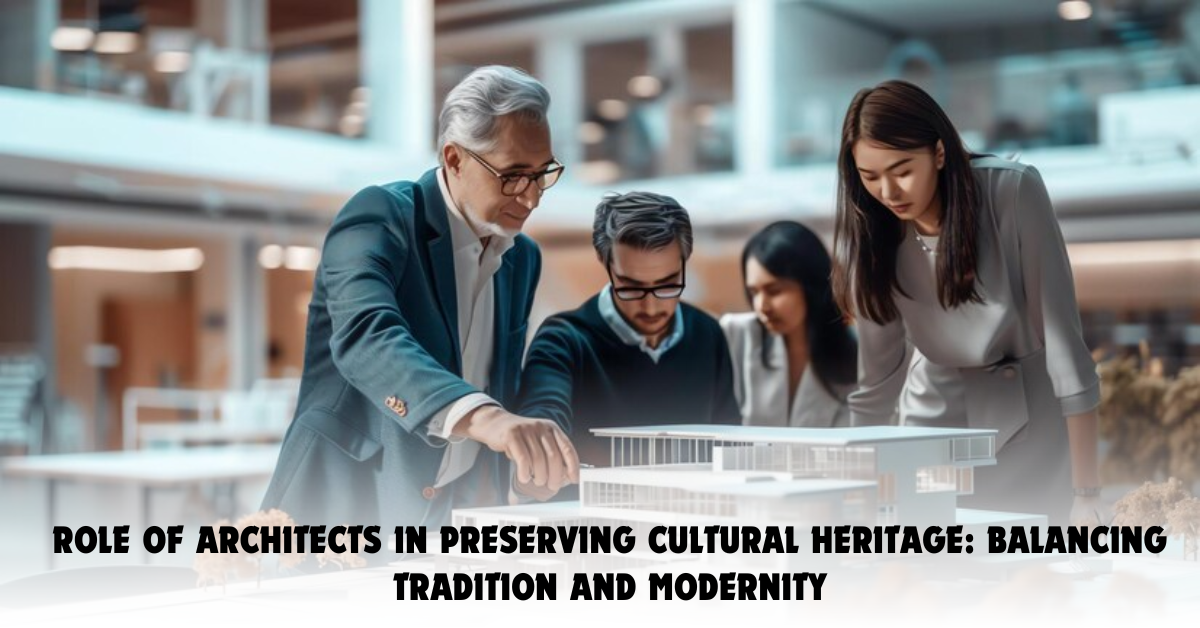Preserving cultural heritage through architecture involves maintaining the integrity of historical structures while adapting them to meet contemporary needs. In Chennai, a city rich with cultural and historical significance, this balancing act is particularly vital. The best architects in Chennai and leading architecture firms play a crucial role in this process, combining traditional techniques with modern innovations to ensure that the city’s heritage is preserved for future generations.
Understanding Cultural Heritage in Architecture
Cultural heritage in architecture refers to the preservation and protection of buildings, monuments, and sites that hold historical, cultural, or aesthetic value. These structures provide a tangible link to the past, offering insights into the architectural styles, construction techniques, and cultural practices of different eras. Preserving these buildings is essential for maintaining the cultural identity and historical continuity of a community.
The Challenges of Preservation
Preserving cultural heritage presents several challenges:
1. Aging Structures: Many historic buildings suffer from wear and tear, requiring careful restoration to prevent further decay.
2. Modern Requirements: Adapting old buildings to meet current safety standards, accessibility requirements, and functional needs without compromising their historical value.
3. Urban Development: Balancing the demands of urban growth and modernization with the need to preserve historical sites.
The Role of the Best Architects in Chennai
The best architects in Chennai are adept at navigating these challenges, employing a range of strategies to preserve cultural heritage while incorporating modern elements.
1. Historical Research and Documentation: Preservation begins with thorough research and documentation. Architects study the history and original design of a building, using archival materials, photographs, and other resources to understand its historical context. This research informs the restoration process, ensuring that any interventions are historically accurate.
2. Sensitive Restoration: Restoration involves repairing and stabilizing a building’s structure while retaining its original materials and design features. Architects in Chennai use traditional construction techniques and materials, working with skilled craftsmen to preserve the authenticity of historical buildings.
3. Modern Adaptations: To ensure that historic buildings remain functional and safe, architects integrate modern systems and amenities discreetly. This might include updating electrical and plumbing systems, installing climate control, or adding accessibility features, all while maintaining the building’s historical character.
The Contribution of Architecture Firms in Chennai
Leading architecture firms in Chennai bring their expertise and resources to heritage preservation projects, offering a multidisciplinary approach that enhances the effectiveness of preservation efforts.
1. Collaborative Approach: These firms collaborate with historians, archaeologists, conservationists, and local authorities to develop comprehensive preservation plans. This multidisciplinary approach ensures that all aspects of a building’s history and significance are considered.
2. Innovative Technologies: Architecture firms in Chennai leverage cutting-edge technologies such as 3D scanning, Building Information Modeling (BIM), and virtual reality to document, analyze, and plan restoration projects. These technologies allow for precise restoration and help visualize how modern adaptations will integrate with historical structures.
3. Community Engagement: Engaging the local community is crucial for the success of preservation projects. Architecture firms facilitate public consultations and workshops to gather input and build support for preservation efforts. This engagement helps ensure that the restored buildings meet the needs and expectations of the community.
Case Studies: Balancing Tradition and Modernity
Several successful projects in Chennai illustrate how architects and architecture firms are balancing tradition and modernity.
1. Restoration of Colonial Buildings: Many colonial-era buildings in Chennai have been meticulously restored, blending historical elements with modern functionality. These projects often involve converting old government buildings into museums, cultural centers, or boutique hotels, preserving their historical value while giving them a new lease on life.
2. Adaptive Reuse of Heritage Structures: Some architecture firms have transformed old industrial buildings and traditional homes into contemporary office spaces, galleries, and cafes. These projects retain the original architectural features, such as facades and interiors, while adapting the spaces for modern use.
3. Conservation of Religious Sites: Preserving temples, churches, and other religious sites requires a deep understanding of their cultural and spiritual significance. Architects work closely with religious communities to ensure that restoration efforts respect the original purpose and traditions of these sites.
Conclusion
Preserving cultural heritage in architecture is a complex and rewarding endeavor that requires a delicate balance between tradition and modernity. The best architects in Chennai and leading architecture firms are at the forefront of this effort, combining historical knowledge with modern technology and design principles to protect the city’s rich architectural legacy. Through their work, they ensure that Chennai’s cultural heritage is not only preserved but also celebrated and integrated into the fabric of contemporary life. This approach enriches the community, provides educational opportunities, and contributes to a sense of identity and continuity for future generations.





